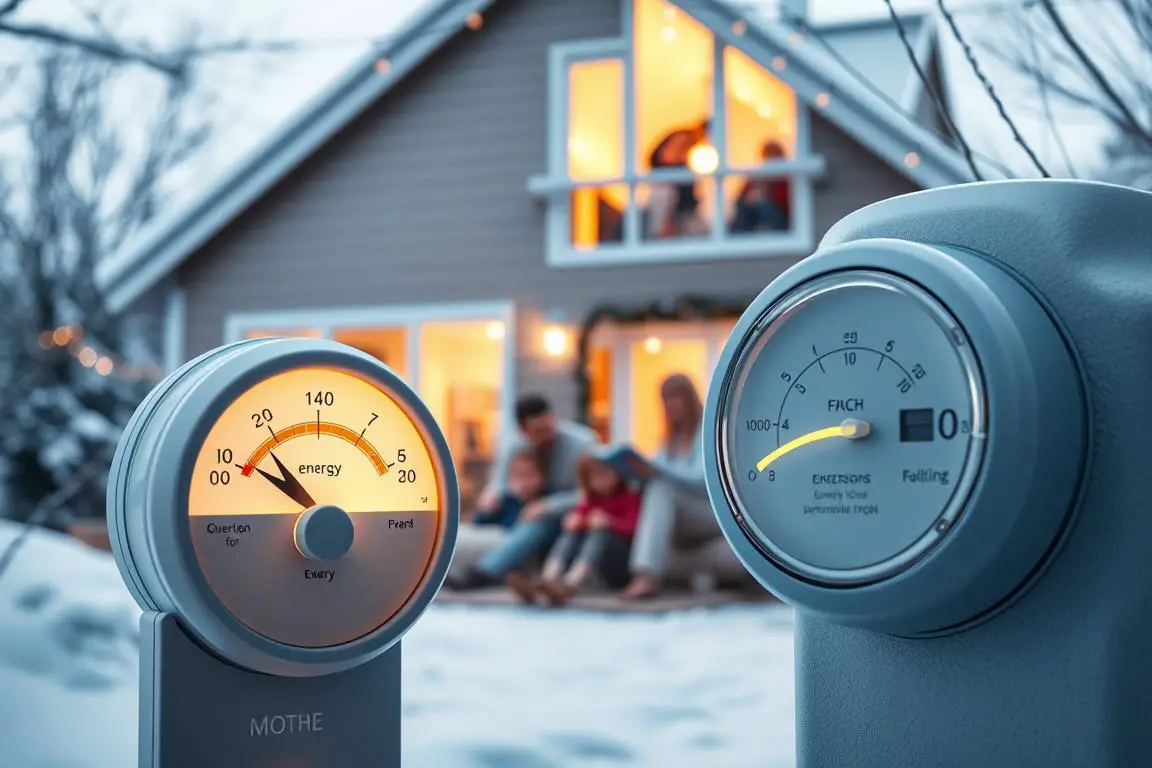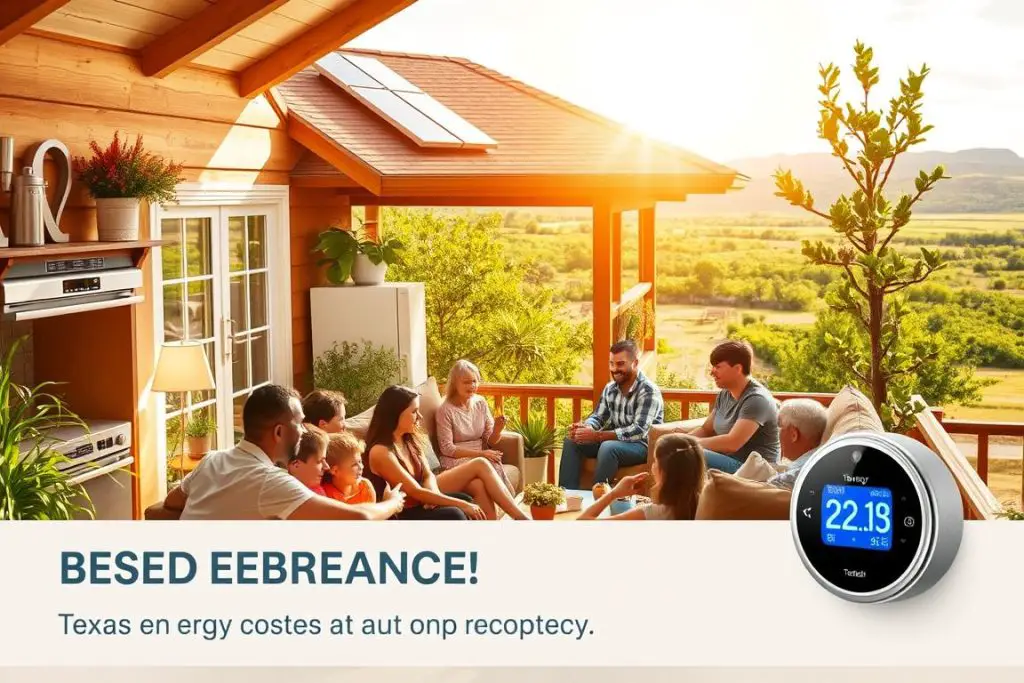Your Guide to LIHEAP: Financial Relief for Families Facing High Energy Expenses

Imagine getting help with your high energy bills. For many US families, there’s a program called the Low Income Home Energy Assistance Program (LIHEAP) that offers just that. It’s designed for low-income families struggling to pay their energy bills. Right now, about 21.2 million US households, or 16%, are behind on their energy payments1. In Fiscal Year 23, LIHEAP was a beacon of hope for 7.1 million households. It plays a critical role in making sure families don’t endure extreme cold or heat without relief.
As the weather changes, so does the cost of keeping your home comfy. In places like Louisiana, West Virginia, and Massachusetts, a lot of people can’t pay their energy bills. The percentages of adults in these states struggling over the past year are 31.4%, 28.5%, and 27.8%, respectively1. LIHEAP helps with heating and cooling costs. It also works to prevent service cutoffs, considering factors like weather, age, and disability
Who gets LIHEAP depends on things like income. For example, a two-person family in Texas qualifies if they make $36,222 or less1. But remember, LIHEAP’s help is temporary and only pays part of your energy bills. The amount you might get varies due to many factors, including where you live and your home’s energy needs1.
Key Takeaways
- LIHEAP is a pivotal government energy assistance program that provides energy bill help to low-income families.
- Understanding the eligibility criteria is essential, as income limits and benefits can vary by state.
- Applying for LIHEAP can safeguard families from the extremes of seasonal temperatures and the escalating cost of utility bills.
- With its short-term aid, LIHEAP focuses on immediate relief while encouraging long-term sustainable energy solutions.
- The program emphasizes the importance of reaching out to state offices for application procedures, reflecting the tailored approach LIHEAP adopts for each state, territory, or tribe.
- Being informed about the program’s specifics and deadlines ensures timely and effective access to this crucial financial support.
Getting help from LIHEAP could be a game-changer for families facing high energy bills. It offers peace of mind and financial help. Starting the LIHEAP process could be your first step toward tackling those bills. LIHEAP shines a light on the path forward for families dealing with high energy costs.
Understanding LIHEAP and its Impact on Energy Expenses
The Low Income Home Energy Assistance Program (LIHEAP) is vital for low-income families. It helps them pay for heating and cooling, aligning with national goals. It also pushes for the use of sustainable energy.
If your income is low, you might get help from LIHEAP2. Now, it even covers cooling costs, reaching more families2. This shows how LIHEAP is adapting to meet more energy needs.
Eligibility Criteria for LIHEAP
To get LIHEAP, your household size, income, and heating costs are checked2. You must live in the state and not have gotten LIHEAP this year already2. Make sure your information is correct to avoid scams.
Steps to Apply for LIHEAP
To apply for LIHEAP, you need an appointment. Bring proofs of identity, residence, income, and heating costs2. For help, check the LIHEAP fact sheet for details on the application and program.
Related Low-Income Energy Assistance Programs
The Weatherization Assistance Program (WAP) also helps low-income households3. It makes homes more energy-efficient, lowering bills and improving living conditions3. LIHEAP and WAP help reduce energy costs for these families.
LIHEAP pays for immediate energy needs, while WAP focuses on long-term fixes3. Both have strong federal support, showing a commitment to helping low-income families and addressing energy inequality.
| Program | Assistance Type | Benefits |
|---|---|---|
| LIHEAP | Direct bill support | One-time grant for heating and cooling costs |
| WAP | Home weatherization | Long-term energy cost reduction |
Learning about these programs can change things for you and your family. They offer important help and lead the way to more energy freedom and safety.
Comprehensive Support: The Texas Energy Assistance Program (CEAP)
In Texas, the weather can be unpredictable. That’s where the Texas Energy Assistance Program comes into play. It is run by the Texas Department of Housing and Community Affairs (TDHCA). It offers a helping hand to those struggling with their energy bills.
What is CEAP?
The Comprehensive Energy Assistance Program (CEAP) is all about helping Texans lower their energy costs. It gives financial aid for utility bills and works to make homes more energy-efficient. This program helped about 134,465 families in 2017, with close to $94.5 million4.
How to Apply for CEAP
If you live in Texas and need help, contact your local community service agency. They work with the TDHCA. Now, even more people can apply since the income limit has been increased to 150% of the Federal Poverty Guidelines4. In Dallas County, you can call (214) 819-1848 or apply online to get started5.
Long-Term Energy Management with CEAP
CEAP isn’t just for short-term help. It also teaches long-term ways to manage energy. For example, making your home more weatherproof can save you about $300 a year on utilities4. It also has emergency plans for those at risk of losing their power. This includes the elderly, those with disabilities, and families with small children4.
| Benefit | Description | Expected Savings |
|---|---|---|
| Utility Bill Assistance | Direct financial aid for electric, gas, and water bills. | N/A |
| Weatherization | Home adjustments to improve energy efficiency. | $300 per year4 |
| Crisis Intervention | Quick response and aid in emergency energy situations. | N/A |
Conclusion
Through exploring government energy help, it’s clear LIHEAP is crucial for many with high energy costs. Funding changed from over $5 billion in 2009 and 2010 to $3.4 billion in 20146. Despite this, around 5.9 million low-income families got heating help in 2013, showing LIHEAP’s essential support7. Also, LIHEAP recipients face double the energy costs compared to other households, highlighting the significance of this aid6.
In Texas, CEAP and the Weatherization Assistance Program boost energy efficiency for low-income families, thanks to a big increase in 20096. Vermont, Colorado, and the Michigan Public Service Commission have led efforts to help with utility bills7. These actions show the strong response of government programs to help those with low income manage their energy use.
To wrap up, using these support options is key. LIHEAP’s participation rates have been about 15% since 19976, despite a slight drop in users. Knowing the rules and applying for LIHEAP and CEAP can help you handle your energy expenses better. As these programs protect against the stress of high energy bills, using their help can offer big savings and a more stable financial future.
FAQ
What is LIHEAP and how can it help with high energy expenses?
Who is eligible for LIHEAP and what are the criteria?
How do I apply for LIHEAP?
Are there programs similar to LIHEAP for low-income families?
What is the Texas Comprehensive Energy Assistance Program (CEAP)?
How can I apply for CEAP in Texas?
Can CEAP help with long-term energy management?
Are there additional resources available for energy assistance in Texas?
Source Links
- Need Help Paying Utility Bills? See if You Qualify for LIHEAP – https://www.ncoa.org/article/what-is-the-low-income-home-energy-assistance-program-liheap/
- Low-Income Home Energy Assistance Program (LIHEAP) – https://www.commerce.wa.gov/community-opportunities/liheap/
- By the Numbers: Low-Income Energy Assistance – RMI – https://rmi.org/by-the-numbers-low-income-energy-assistance/
- Texas Comprehensive Energy Assistance Program – Payless Power – https://paylesspower.com/blog/texas-comprehensive-energy-assistance-program/
- DCHHS | Human Services – https://www.dallascounty.org/departments/dchhs/human-services/ceap.php
- Approaches to Low-Income Energy Assistance Funding in Selected States – https://aspe.hhs.gov/reports/approaches-low-income-energy-assistance-funding-selected-states-0
- PDF – https://liheapch.acf.hhs.gov/sites/default/files/webfiles/docs/leveraging.pdf







